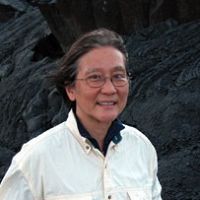AWESOM
Atmospheric, Watershed, Ecological, Stream and Ocean Model
Modeling long-term and large-scale consequences of CZ dynamics in the context of changes in climate, land use, and water mgmt.
Model Category:
-
Eel, INVESTIGATOR
-
Eel, INVESTIGATOR
AWESOM will include some pre-existing model components that are well established and well validated and that we are confident provide a robust representation of the key processes that arise in the Eel River System. These components include a kinematic channel routing model for the Eel River network (Lighthill and Whitham, 1955); the Weather Research and Forecasting Model (WRF, http://www.wrf-model.org), which we have adapted to Northern California to represent meso-scale atmospheric dynamics and interactions with the land and ocean; the Regional Ocean Modelling System (ROMS, http://www.myroms.org/) and a simple ecosystem model NPZD, which we have adapted to the North Pacific to link the outputs of the Eel River to satellite observations of nearshore ocean productivity; and a modification of the “river-dominated lakes” model to describe the development of thermal stratification in aquatic habitat (Killworth and Carmack, 1979). The AWESOM framework will also include novel model components—which will be developed, refined and improved in conjunction with the field research in the Eel River Basin. Amongst these components will be: (1) a hillslope scale groundwater discharge model that can represent the partitioning of rainfall into the vadose zone, saturated saprolite, and weathered bedrock that accounts for rapid bypass of water along fractures to the water table perched at the base of the critical zone (Figure 4) and delivers summer base flow to the channel network; (2) a species- and lithology-dependent differential uptake of water by trees from the subsurface critical zone; (3) a moisture-microbial community dynamics model; (4) a coupled stream temperature and runoff model that operates throughout the entire stream network and predicts their diurnal oscillations; and (5) an optimization procedure to project the effects of climate on future vegetation distributions. We hypothesize that the physics of these processes are radically different from that embedded in standard hillslope hydrological models (which rely on continuum porous media flow assumptions derived from Darcy’s Law) and requires a new kind of physical model (Salve, et al., 2012). Similarly, new models for food web dynamics, algae and salmonid population fluctuations, and in-stream transport and processing of critical solutes and sediment fluxes will be developed from our field campaigns and system data analysis.
Explore Further


